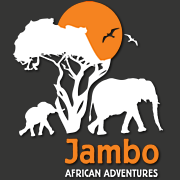Background Information
South Luangwa Valley Overview
Situated in a remote region, Zambia’s South Luangwa Valley is home to over 60 different animal species and over 400 different bird species. Experts have dubbed South Luangwa as one of the greatest wildlife sanctuaries in the world, and not without reason. The concentration of game around the Luangwa River and its ox bow lagoons is among the most intense in Africa. As one of Africa’s most unspoiled parks, South Luangwa National Park features a great diversity of habitat, scenery and wildlife.
The Luangwa River and its lagoons form the park’s eastern boundary and play a major role in the ecology of the region. The changing seasons add to the Park’s richness ranging from dry, bare bushveld in the winter to a lush green wonderland in the summer months. The visitor can expect a wildlife experience that is difficult to duplicate elsewhere in the world. The valley has been called the “Last Kingdom of Elephants” and today it has a population estimated at 15,000, along with equal number of hippo in the Luangwa River. Luangwa allows night game viewing with spot lights to glimpse the fascinating nocturnal creatures not visible or active during the day. Lions on the hunt, hyenas, civets, honey badgers and porcupines are often seen at night. Most notable, however, are the leopards which are frequently observed stalking and hunting their prey, or interacting with marauding lions or hyenas intent on robbing their kills. Walking safaris, under the guide of experienced safari rangers, can last from a few hours to much longer, mobile camping safaris, where you explore this wilderness by walking from bush camp to bush camp.
Climate
South Luangwa becomes parched in the Dry season (May to October), when rain simply refuses to fall. The heat starts building from the mid-year months of June/July, peaking unpleasantly in October before the rains finally arrive. The respite is only temporary, though, as the Wet season (November to April) keeps the weather on the boil. Only the park’s higher altitudes are exempt, where it gets cooler as you ascend.
ZAMBIA TOP DESTINATIONS
› Kafue National Park› Lower Zambezi National Park
› South Luangwa National Park
› Victoria Falls, Livingstone
South Luangwa National Park is located near the village of Mfuwe and is 700km/343mi from Lusaka. New arrivals to Zambia will often come through Kenneth Kaunda International Airport (LUN), the country’s major airport, located 14km/9mi from the capital. From Lusaka, regular flights take visitors to Mfuwe International Airport (MFU), just outside the park. It’s also possible to fly to Mfuwe from Livingstone Airport (LVI) (Harry Mwanga Nkumbula International Airport), just outside of Livingstone and close to Victoria Falls. In the high season, there are also direct flights from Johannesburg to Mfuwe. People driving to the park will usually come via Chipata. The drive has been much improved in recent years with the tarring of the road and will take about two hours. A 2WD car is fine.
Wildlife viewing in South Luangwa is superb, with excellent animal densities. Big herds of elephant and buffalo are almost guaranteed, and sightings of lion and leopard are common. There are lots of antelope around, and most interesting are the three unique subspecies that inhabit the park: Thornicroft's giraffe, Crawshay's zebra and Cookson's wildebeest.
The birdlife in South Luangwa is phenomenal. More than 400 species have been recorded here. Migratory colonies of carmine bee-eaters nesting on the banks of the river are a must-see if you are here around August and September. Pelicans and yellow-billed storks gather in the last puddles of water in the Dry season to scoop out the fish, and southern-crowned cranes can sometimes be found in flocks of up to 300. Owls and nightjars are often spotted on night drives.
Best Time to Visit
July to November are the best wildlife-viewing months. This is the middle and end of the Dry season and water in the bush has dried up, so animals congregate around the rivers and watercourses. However, October and November are extremely hot, and some people may find conditions difficult to cope with in these months.








